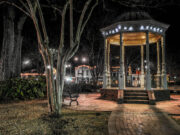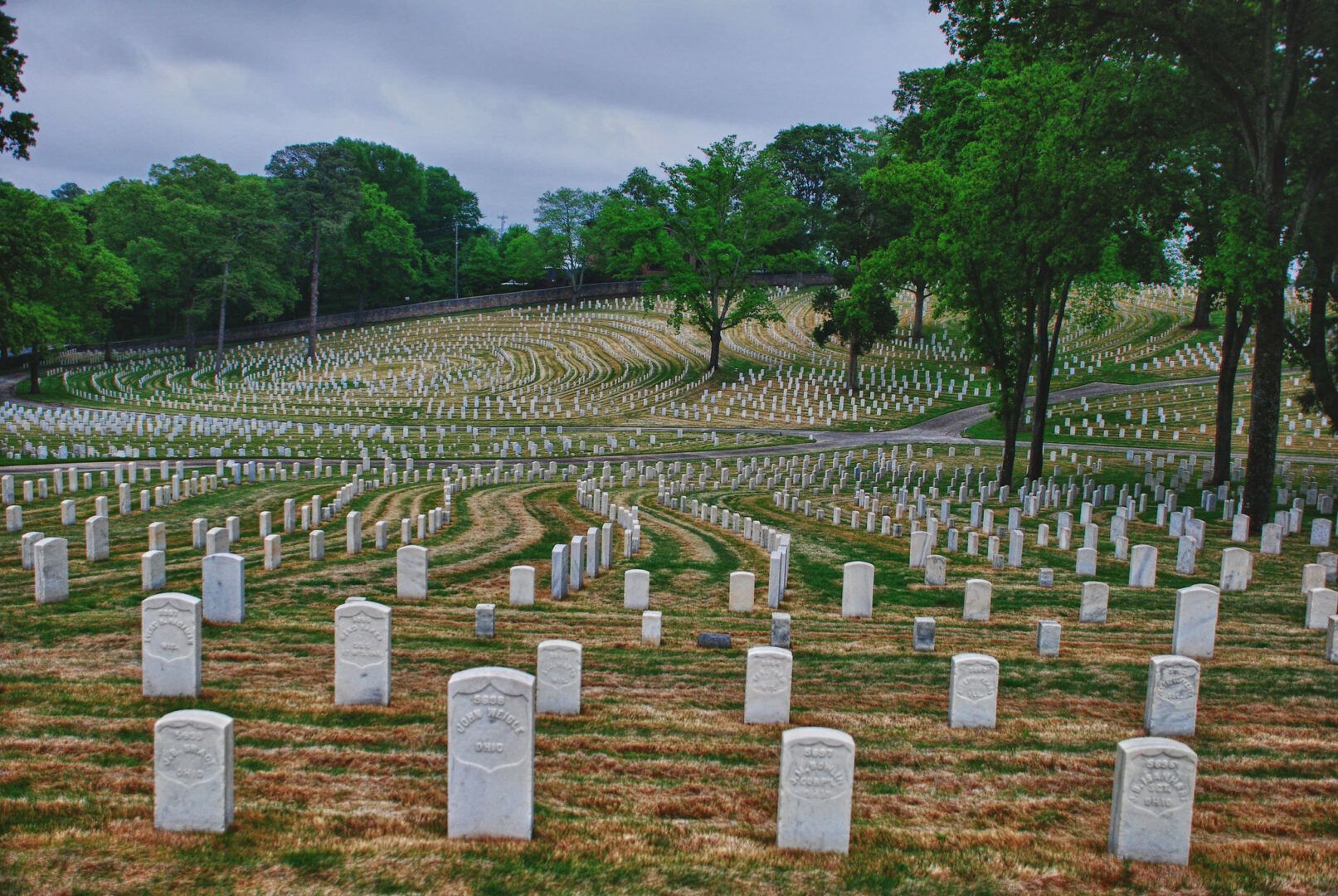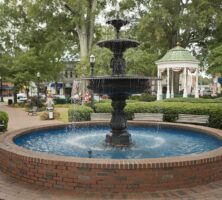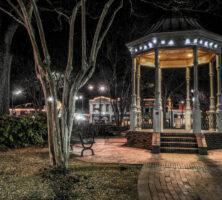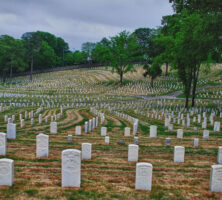Located in metropolitan Atlanta just north of the Chattahoochee River, the city of Marietta has a population of about 60,972, according to the 2020 census. The seat of government for suburban Cobb County, Marietta possesses a historic business area centered on a downtown square and five National Register districts, spreading in all directions from the middle of town.
Kennesaw Mountain, the site of a major Civil War (1861-65) battle, is just north of town. Air Force Plant No. 6 on South Cobb Drive has housed two major airplane manufacturers, the Bell Aircraft Corporation during World War II (1941-45) and Lockheed (later Lockheed Martin), since the Korean War. Dobbins Air Reserve Base and the Naval Air Station Atlanta are adjacent to the plant. Marietta is home to two universities, Southern Polytechnic State University (later Kennesaw State University) and Life University, a private chiropractic institution. Chattahoochee Technical College is located just outside the city limits, and Kennesaw State University is about eight miles from the center of town.
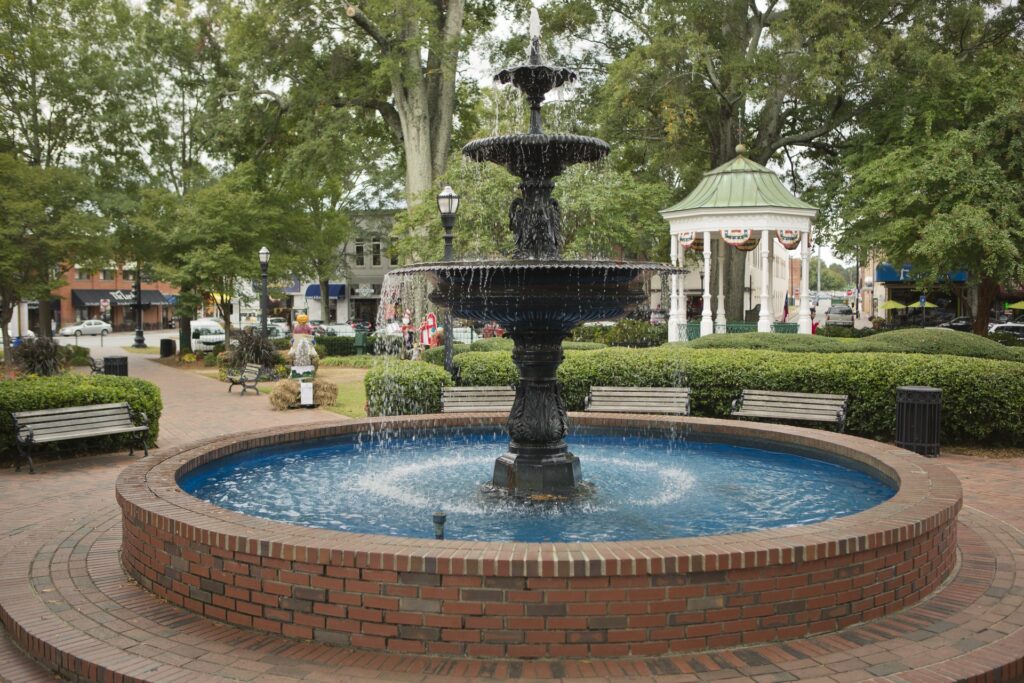
Antebellum Era
Marietta traces its roots to the Cherokee Territory in the 1830s. Local leaders named the county in memory of Thomas W. Cobb of Greensboro, a U.S. senator who died in 1830. They reportedly named Marietta in memory of Cobb’s wife, Mary Moore, who had preceded her husband in death. Surveyor James Anderson created the original town plat in 1833. Within a year almost 100 people had settled there. On December 19, 1834, the Georgia legislature chartered the village of Marietta, vesting power in five commissioners elected annually.
Construction of the state-owned Western and Atlantic Railroad (W&A) hastened the development of the pioneer community. In 1845 the W&A initiated regular runs from Marthasville (later renamed Atlanta) to Marietta. Within five years the rail line was completed to Chattanooga, Tennessee. More than a thousand feet above sea level, Marietta was one of the highest points of elevation along the W&A. Because of its relatively mild climate and an abundance of natural spring water, the town became a favorite destination for aristocratic visitors from the Georgia and South Carolina coast, who flocked there during summer months to escape the stifling heat and malarial climate of the lowlands. In time some became permanent residents.
Hotels and inns sprang up around town to accommodate the tourist business. Opened next to the depot in 1855, the Fletcher House (known since the Civil War as the Kennesaw House) is the only one still standing. Owned by the Downtown Marietta Development Authority, the Kennesaw House now houses the Marietta History Museum. Shops and stores around the square served the farmers of the surrounding area. Marietta grew in population, and the legislature enacted a new charter on January 22, 1852, creating a town form of government with a mayor and council. The first mayor, John Heyward Glover, had been a South Carolina rice planter before moving to Marietta in search of a healthier climate. He opened a bank and used enslaved labor to operate a successful leather tannery.
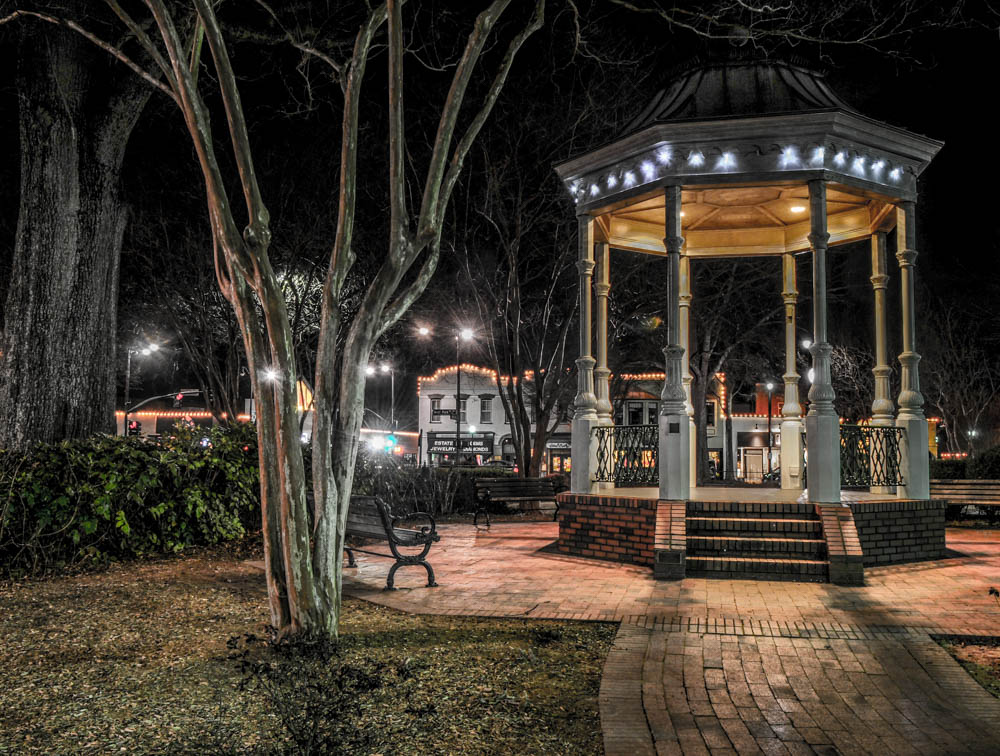
Civil War and Postwar Era
On July 3, 1864, General William T. Sherman’s Union forces occupied Marietta after the Battle of Kennesaw Mountain (June 27, 1864). When the troops departed in November on the March to the Sea, they set fire to all the buildings around the square except the Masonic Hall. Sparks traveled a block westward, setting the top floor of the four-story Fletcher House on fire. The soldiers also destroyed about twenty residences, Glover’s tannery, and the Georgia Military Institute, on the southern edge of town.
After the war two military cemeteries were opened in Marietta. Henry Greene Cole, a prominent Marietta citizen, offered land on the east side of town as a burial ground for the honored dead of both sides. After bitter townspeople rejected that idea, the federal government turned the Cole property into a cemetery for Union casualties, named the Marietta National Cemetery. To the south, adjacent to the city cemetery, a private memorial association started a Confederate burial site, the Marietta Confederate Cemetery, on land donated by Jane Glover, the widow of Marietta’s first mayor.
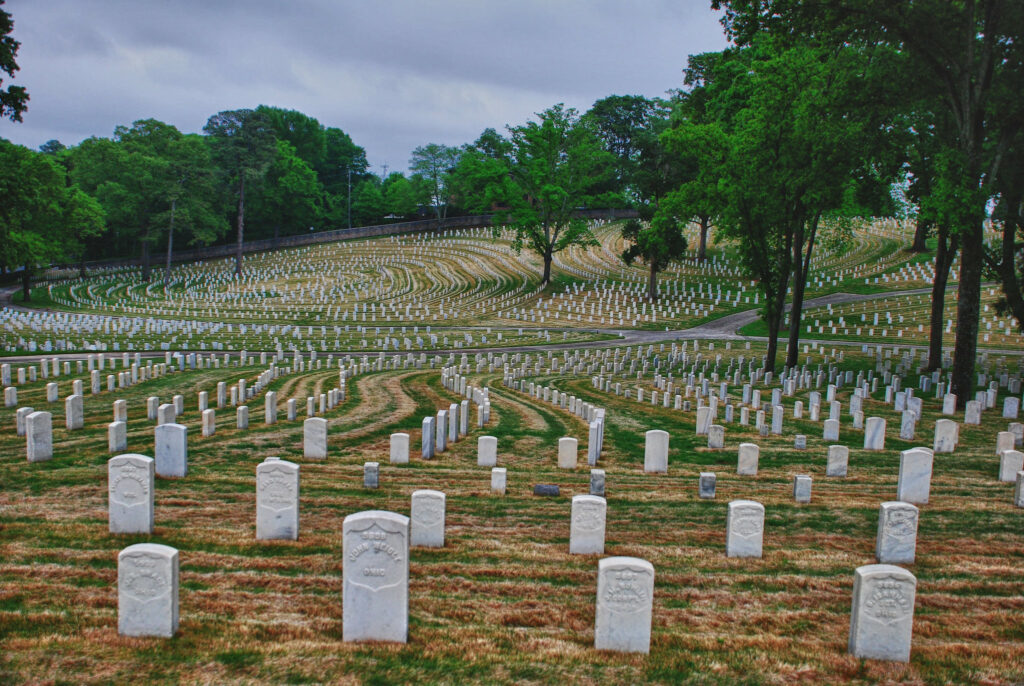
Marietta’s postwar history paralleled that of the rest of Georgia. Outside the city there were too many cotton farms for the surrounding countryside to support comfortably, but the city itself produced a prosperous business and professional class that built fine homes throughout the downtown area, many of which are still standing. Near the end of the nineteenth and beginning of the twentieth century, the Marietta elite established a number of cotton, flour, paper, and marble mills, along with chair factories and machineworks. The Brumby Chair Company produced rocking chairs that were in demand nationwide, and the Glover Machine Works found an international market for its narrow-gauge locomotives. Wages were low, however, and young people moved north in increasing numbers as the twentieth century progressed. As late as 1940 the population of Marietta was below 9,000 and that of Cobb County just above 38,000.
Growth since World War II
The turning point came with World War II. County attorney James V. Carmichael, Marietta mayor L. M. “Rip” Blair, and county commissioner George McMillan, aided by Marietta native General Lucius D. Clay, joined to bring to town a branch of the Bell Aircraft Corporation. The company put 28,158 people to work assembling B-29 Superfortresses. The vast majority of the laborers were natives of north Georgia. At Bell Bomber they earned higher wages than they had ever received before and acquired job skills that prepared them well for the postwar years. Even after the plant closed following the end of the war, Marietta experienced little unemployment and few vacant houses. A number of former aircraft workers started their own businesses, others found employment in Atlanta’s automobile assembly plants, and the rest found factory or service jobs that kept them in the area.
In 1951, during the Korean War (1950-53), the air force invited the Lockheed Corporation of California to reopen the mammoth Marietta facility. Bell Bomber was just an assembly plant, building the Boeing-designed B-29. Lockheed-Georgia employed considerably more professional engineers, who in the early 1950s designed the C-130 Hercules transport plane, an aircraft still in production a half century later. In the next decade the company designed and manufactured two larger cargo planes, the C-141 and the C-5. In 1995 Lockheed merged with Martin Marietta. As of 2003 the Lockheed Martin plant in Marietta employed about 7,000 workers on two major projects, the C-130J and the F-22 fighter plane.
As a result of the Great Migration to northern industrial centers, Cobb County’s African American population dropped from 30 percent in 1900 to 4 percent in 1980. For much of the post–World War II era, about half of the county’s tiny Black population resided within the Marietta city limits. In the days of segregation Marietta maintained two high schools, Marietta High School for whites and Lemon Street High School for Blacks. The system was integrated in 1967 by eliminating Lemon Street and sending all students to Marietta High. In 1975 local civil rights activists won a significant victory in federal district court with Grogan v. Hunter, which challenged Marietta’s gerrymandered ward map on the grounds that it diluted Black voting strength and failed to maintain approximately the same number of voters in each district. In the next citywide election, Hugh Grogan became the first African American to win a seat on the city council.
In the last two decades of the twentieth century the population of Marietta and Cobb County became more diverse as large numbers of African Americans and Hispanics relocated to the area. According to the 2020 census, approximately 32 percent of the Marietta population is Black and 16 percent is Hispanic. For the county as a whole, the respective figures are 28 percent and 13 percent. During the 1990s the city’s population grew by about 33 percent.
Increasingly Marietta has experienced the problems associated with urban areas. Houses appreciate greatly in value, and as a result newcomers find it more difficult to buy their own homes. In 2000, 62 percent of the housing units were renter-occupied and only 38 percent owner-occupied, figures almost the reverse of those for the rest of the county. One of the central issues of the 2001 mayoral and city council elections was how to stimulate economic revitalization in rundown parts of town. In one of his first actions as mayor, Bill Dunaway established a blue-ribbon redevelopment committee to generate a plan for continued economic growth. At the start of a new century, the people of Marietta appeared divided along ethnic and class lines. The town’s future seemed to depend on its ability to maintain a vibrant economy and provide equitable services and opportunities for all its citizens.


